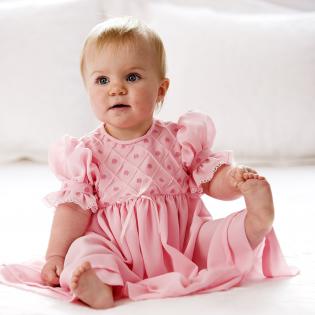About 10 babies in every 1,000 births in Australia are diagnosed with infant hip dysplasia. It might not seem a lot - unless you're one of the parents, and then it can be a shock as not much is known about the condition. The good news is that infant hip dysplasia can be treated successfully, and without any after effects, with the right medical advice and management.
What is infant hip dysplasia?
The broad medical term used is developmental dysplasia of the hip (DDH), which describes a wide range of disorders related to the abnormal development of the hip at any time during foetal life, infancy or childhood. There are varying degrees of DDH.
Why do children get hip dysplasia?
The cause of dysplasia of the hip is unknown, but certain factors such as gender, birth order, family history, intrauterine position, delivery type, joint laxity and postnatal positioning are believed to affect the risk. Breech babies and twins are said to be at a higher risk of hip dysplasia. Genes and family history are also thought to play a part in this condition.
How are children treated?
Your baby’s paediatrician will perform a physical examination. This is normally within the first week of your baby’s life. If hip dysplasia is suspected, your baby will be referred to an ultrasound clinic.
An ultrasound may confirm a diagnosis of DDH, but not all babies are treated. If the hip dysplasia is relatively mild, sometimes the condition resolves itself with growth and just requires frequent monitoring. However, in more developed cases, a hip brace may be used. This holds the hips in a position, which promotes proper growth and development of the hips. It holds the legs apart and turns them outwards, in a 'frog-legged' position. The brace maintains the proper position of the femoral head, allows for 'tightening up' of the ligamentous structures and stimulates normal formation of the acetabulum (hip socket).
To assist this stable positioning a number of devices are available for treating your baby. The Dennis Browne Bar or Pavlik Harness, Correctio Brace are widely used here in Australia and with time, motion and gravity, the hip works itself correctly into place, that is, a more abducted and reduced position. With early detection, monitoring and treatment positive results can be gained especially if parents are disciplined with using the baby’s brace.
If your child’s hip dysplasia is not detected until later, such as at 6 to 18 months, he or she may have to be placed in a hip spica cast for a few months until the hip is stable. For more serious cases or for older children with this condition, surgery may be required.
The various treatments for hip dysplasia can seem very daunting at first, but the good news is that these treatments are often very successful and although it means some parenting obstacles and discomfort for your baby in the early stages of his/her life, it will mean he/she could avoid hip problems later in life.
Early diagnosis and treatment of DDH is important, since late diagnosis is often associated with poor outcome and may require more complex surgery. Undiagnosed DDH, if left untreated, can result in severe hip problems in adult life and the early development of osteoarthritis. For more information, ask your baby’s doctor, maternal health nurse or a qualified healthcare practitioner.
Where can I get more information?
There is an online resource for parents with hip dysplasia babies – www.hipbabes.com.au. The information included on the Hip Babes website is for information only, and is by no means a substitute for the advice of a qualified medical practitioner.



















__small.png)










